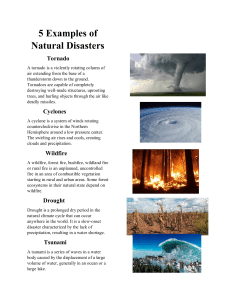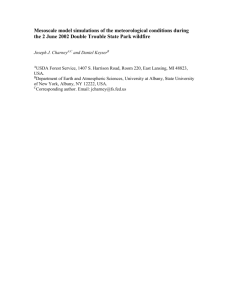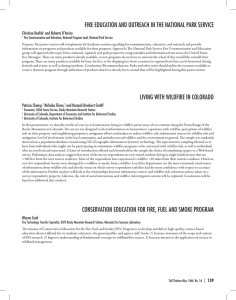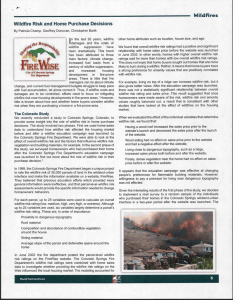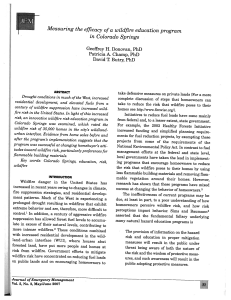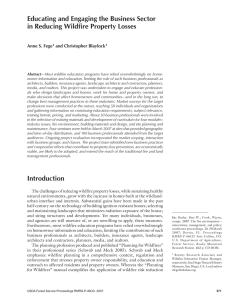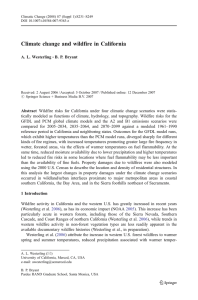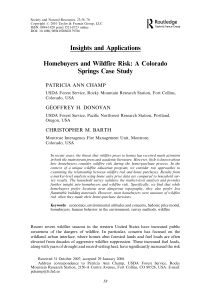Geophysical Research Abstracts Vol. 16, EGU2014-15745, 2014 EGU General Assembly 2014
advertisement
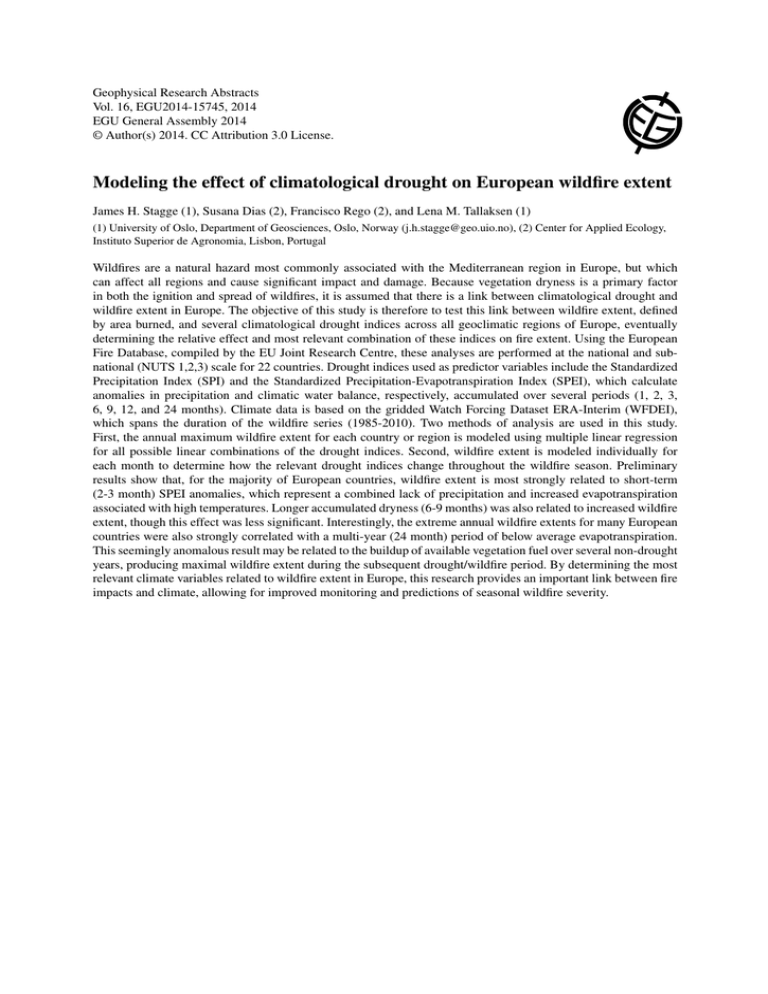
Geophysical Research Abstracts Vol. 16, EGU2014-15745, 2014 EGU General Assembly 2014 © Author(s) 2014. CC Attribution 3.0 License. Modeling the effect of climatological drought on European wildfire extent James H. Stagge (1), Susana Dias (2), Francisco Rego (2), and Lena M. Tallaksen (1) (1) University of Oslo, Department of Geosciences, Oslo, Norway (j.h.stagge@geo.uio.no), (2) Center for Applied Ecology, Instituto Superior de Agronomia, Lisbon, Portugal Wildfires are a natural hazard most commonly associated with the Mediterranean region in Europe, but which can affect all regions and cause significant impact and damage. Because vegetation dryness is a primary factor in both the ignition and spread of wildfires, it is assumed that there is a link between climatological drought and wildfire extent in Europe. The objective of this study is therefore to test this link between wildfire extent, defined by area burned, and several climatological drought indices across all geoclimatic regions of Europe, eventually determining the relative effect and most relevant combination of these indices on fire extent. Using the European Fire Database, compiled by the EU Joint Research Centre, these analyses are performed at the national and subnational (NUTS 1,2,3) scale for 22 countries. Drought indices used as predictor variables include the Standardized Precipitation Index (SPI) and the Standardized Precipitation-Evapotranspiration Index (SPEI), which calculate anomalies in precipitation and climatic water balance, respectively, accumulated over several periods (1, 2, 3, 6, 9, 12, and 24 months). Climate data is based on the gridded Watch Forcing Dataset ERA-Interim (WFDEI), which spans the duration of the wildfire series (1985-2010). Two methods of analysis are used in this study. First, the annual maximum wildfire extent for each country or region is modeled using multiple linear regression for all possible linear combinations of the drought indices. Second, wildfire extent is modeled individually for each month to determine how the relevant drought indices change throughout the wildfire season. Preliminary results show that, for the majority of European countries, wildfire extent is most strongly related to short-term (2-3 month) SPEI anomalies, which represent a combined lack of precipitation and increased evapotranspiration associated with high temperatures. Longer accumulated dryness (6-9 months) was also related to increased wildfire extent, though this effect was less significant. Interestingly, the extreme annual wildfire extents for many European countries were also strongly correlated with a multi-year (24 month) period of below average evapotranspiration. This seemingly anomalous result may be related to the buildup of available vegetation fuel over several non-drought years, producing maximal wildfire extent during the subsequent drought/wildfire period. By determining the most relevant climate variables related to wildfire extent in Europe, this research provides an important link between fire impacts and climate, allowing for improved monitoring and predictions of seasonal wildfire severity.
